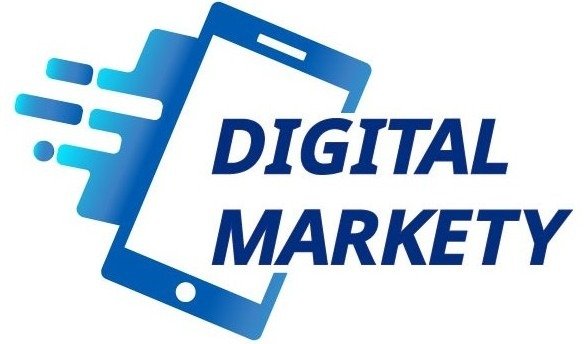
Why is email marketing important?
The Importance of Email Marketing: Why Every Business Needs It
Introduction to Email Marketing
Email marketing is a digital marketing strategy that involves sending emails to prospects and customers. It serves as a direct line of communication, enabling businesses to convey important information, establish relationships, and promote products or services. Unlike traditional marketing methods, email marketing allows for personalized communication, which can significantly enhance engagement rates. Each email campaign can be tailored based on customer data, ensuring that the content resonates with the targeted audience.
Table Of Content
- Introduction to Email Marketing
- Cost-Effectiveness of Email Marketing
- High Reach and Engagement Rates
- Personalization and Targeting Capabilities
- Build and Nurture Customer Relationships
- Measurable Results and Analytics
- Automation and Efficiency in Campaigns
- Integration with Other Marketing Channels
- Conclusion: The Future of Email Marketing
Email marketing functions on various principles, primarily emphasizing the importance of collecting and managing contact lists. Businesses must acquire permission from users to send them emails, adhering to regulations like the General Data Protection Regulation (GDPR). Once users opt in, companies can segment their audiences based on behaviors and preferences, delivering tailored messages that are more likely to prompt action.
Furthermore, the effectiveness of email marketing can be measured through various metrics, such as open rates, click-through rates, and conversion rates. These analytics provide valuable insights into consumer behavior, enabling businesses to refine their strategies continually. The integration of email marketing with other digital marketing channels amplifies its effectiveness, allowing for a multifaceted approach to reaching potential customers.
Cost-Effectiveness of Email Marketing
In the realm of digital marketing, email marketing stands out as a highly cost-effective strategy for businesses of all sizes. Unlike traditional marketing channels, which often involve substantial expenditures on print materials, media buys, and promotional events, email marketing requires minimal investment. Businesses can create and send emails with little more than the cost of a reliable email service provider and some time spent on content creation. This accessibility makes it particularly appealing for small and medium-sized enterprises (SMEs) looking to maximize their marketing budget.
One of the compelling aspects of email marketing is its ability to generate a significant return on investment (ROI). Studies have consistently shown that for every dollar spent on email marketing, businesses can expect an average return of $42. This impressive figure illustrates how effectively email marketing can convert prospects into customers and maintain relationships with existing clients. Furthermore, the performance of email campaigns can be easily tracked and measured through various metrics, such as open rates, click-through rates, and conversion rates, allowing businesses to optimize their strategies over time.
Additionally, email marketing offers unparalleled targeting capabilities. With the capacity to segment audiences based on behavior, preferences, and demographics, businesses can craft personalized messages that resonate with specific groups. This targeted approach not only increases engagement rates but also enhances the likelihood of conversions, thus amplifying the overall cost-effectiveness of email campaigns. In essence, the ability to reach the right audience with the right message at the right time is a significant advantage that contributes to the financial viability of email marketing as a preferred channel.
In conclusion, the cost-effectiveness of email marketing, combined with its high ROI and targeting capabilities, makes it an indispensable tool for any business aiming to grow its customer base and enhance its marketing efforts.
High Reach and Engagement Rates
In the contemporary marketing landscape, email marketing stands out as a powerful tool, characterized by its impressive reach and engagement rates. Statistics indicate that email continues to be one of the most effective marketing channels available. For instance, studies report that the average open rate for email campaigns hovers around 20-25%, a figure that significantly surpasses the typical engagement levels found on social media platforms. This high open rate underscores the potential of email marketing to reach a broad audience, establishing a direct line of communication with customers.
Additionally, click-through rates (CTR) for email marketing often range between 2-5%, depending on the industry and campaign strategies. This is considerably higher than the average engagement rates on social media, reinforcing the notion that well-crafted email campaigns are not only capable of reaching larger audiences but also of keeping them engaged. Businesses harnessing the power of email marketing thus benefit from a strong return on investment (ROI); research indicates that every dollar spent on email marketing can yield around $42 in return.
Certainly, the advantages of email extend beyond just numbers. The capacity for targeted messaging allows businesses to tailor content specifically to the interests and behaviors of their audience. By segmenting email lists based on customer preferences or purchasing history, companies can personalize communication effectively. This level of customization further enhances engagement as recipients are more likely to interact with content that resonates with their needs and interests. In a digital age where customer attention is divided among numerous channels, the targeted approach inherent in email marketing is invaluable.
Personalization and Targeting Capabilities
Email marketing stands out as a potent tool that offers unparalleled personalization and targeting capabilities. In an age where consumers crave tailored experiences, businesses can leverage email marketing to create meaningful interactions with their audiences. Personalization in email marketing extends beyond merely addressing the recipient by name. It encompasses the customization of content, timing, and product recommendations based on individual preferences and behaviors. This level of personalization fosters a connection between the brand and its customers, making recipients feel valued and understood.
One of the most effective strategies within email marketing is audience segmentation. By categorizing subscribers into distinct groups based on demographics, purchasing habits, or engagement levels, businesses can craft messages that resonate with specific segments. For instance, a retail brand might segment its audience into new customers, loyal patrons, and those who have abandoned their carts. Each group can then receive tailored messaging designed for their unique relationship with the brand, maximizing the likelihood of engagement.
Moreover, targeted emails can significantly enhance conversion rates. Research indicates that personalized emails can deliver six times higher transaction rates than non-personalized counterparts. By utilizing data analytics, businesses can gain insights into customer behaviors and preferences, allowing them to fine-tune their email campaigns. This meticulous approach not only improves customer satisfaction but also fosters brand loyalty as consumers are more inclined to support brands that recognize their individual needs.
Additionally, using automation tools, businesses can streamline these personalized communications, ensuring that they reach customers at optimal times. Automation allows for timely delivery of personalized content, which is crucial for capitalizing on fleeting purchasing moments. Therefore, the integration of personalization and targeting in email marketing should not be underestimated, as it is essential for driving engagement and achieving higher conversion rates.
Build and Nurture Customer Relationships
Email marketing serves as a powerful tool for businesses aiming to build and nurture lasting relationships with their customers. Unlike fleeting social media interactions, email provides a direct line of communication that can be personalized and tailored to individual preferences. This distinction is crucial; customers appreciate when brands prioritize their needs, which fosters a sense of loyalty and trust.
Regularly delivering valuable content through email not only keeps your audience engaged but also positions your brand as a trusted resource. This can include newsletters, exclusive promotions, and product updates, all crafted to provide insights that matter to your customers. By delivering relevant information consistently, businesses can maintain ongoing communication, ensuring that their brand remains top-of-mind when customers are making purchasing decisions.
Moreover, email marketing allows businesses to segment their audiences effectively. By utilizing customer data, companies can create targeted campaigns that resonate with specific groups, enhancing the relevance of the message. For instance, personalized emails based on past purchases or browsing behavior can significantly improve engagement rates, as recipients feel the content speaks directly to their interests. This level of customization helps in nurturing relationships, as customers are more likely to feel valued and understood.
Additionally, the capability to gather and analyze engagement data is one of email marketing’s key strengths. By monitoring open and click-through rates, businesses can gain insights into customer preferences and behaviors, enabling them to refine their strategies further. This iterative process ensures that the relationship-building continues to evolve, catering to the changing needs of the customer base.
In essence, by leveraging email marketing, businesses can cultivate a loyal customer base through meaningful interactions that promote trust, understanding, and a stronger emotional connection with the brand.
Measurable Results and Analytics
In the evolving landscape of digital marketing, one of the significant advantages of email marketing is its ability to provide measurable results through analytics. Unlike some other marketing strategies, email campaigns deliver quantifiable data that allows businesses to assess the effectiveness of their communication efforts. This data-driven approach is essential for understanding customer behavior, preferences, and engagement levels.
Email marketing platforms offer analytics tools that track various metrics, including open rates, click-through rates, conversion rates, and unsubscribe rates. These key performance indicators (KPIs) help businesses evaluate the success of their campaigns. By analyzing these metrics, companies can gain insights into which subject lines resonate best with their audience, the optimal time for sending emails, and the content that drives the highest engagement.
Additionally, segmentation and targeting capabilities enhance the effectiveness of email marketing campaigns. By dividing the subscriber list based on demographics, behaviors, or purchase history, businesses can tailor their messages to specific audiences. The performance of these segmented campaigns can be tracked and compared with broader campaigns, allowing for even deeper insights into customer preferences. This enables marketers to refine their strategies continually and improve future communications.
The predictive capabilities of analytics further elevate email marketing. By leveraging historical data, businesses can forecast trends and customer behaviors, allowing for proactive adjustments to their marketing strategies. This forward-thinking approach not only enhances customer satisfaction but also maximizes the return on investment (ROI) for marketing efforts.
In summary, the measurable results and analytics offered by email marketing are critical for businesses seeking to optimize their marketing strategies. By carefully analyzing data, companies can better understand their audience, improve campaign effectiveness, and ultimately drive more meaningful customer engagement.
Automation and Efficiency in Campaigns
Email marketing has significantly evolved over the years, primarily due to advancements in automation tools that streamline processes and enhance operational efficiency. These tools allow businesses to automate various aspects of their campaigns, ultimately saving time and resources. By implementing automated email sequences, companies can nurture leads and maintain customer engagement without the need for continuous manual intervention.
One of the key advantages of using automation in email marketing is the ability to segment audiences effectively. By categorizing subscribers based on their behavior, interests, or demographics, businesses can send personalized messages that resonate with their target audience. This targeted approach increases the likelihood of engagement and conversions, as recipients are more inclined to interact with content that is relevant to their needs.
Moreover, automated emails can be scheduled to be sent at optimal times, ensuring that messages reach the audience when they are most likely to be engaged. For instance, welcome emails, abandoned cart reminders, and product recommendations can be triggered based on user actions, thus facilitating timely communication that drives engagement. With automation, these processes can run continuously, allowing businesses to maintain a consistent presence in their customers’ inboxes.
Additionally, automation tools often come with analytics and reporting capabilities that provide valuable insights into campaign performance. By analyzing metrics such as open rates, click-through rates, and conversion rates, businesses can adjust their strategies in real-time and optimize their email marketing efforts. This data-driven approach ensures that companies can refine their messaging and increase the effectiveness of their campaigns over time.
In conclusion, the use of automation in email marketing is essential for businesses aiming to enhance efficiency and engagement. By leveraging these tools, companies can streamline their campaigns, nurture leads effectively, and maintain a strong connection with their customers—all crucial elements for success in today’s digital landscape.
Integration with Other Marketing Channels
Email marketing stands as a cornerstone in the digital marketing landscape, particularly when integrated with other marketing channels. By creating a multi-channel strategy, businesses can enhance their outreach and engagement levels, leveraging the strengths of each channel to create a more cohesive user experience. When utilized alongside social media, for instance, email marketing can drive traffic to social platforms where interactions are more dynamic and shareable. By promoting social media campaigns within email newsletters, businesses can encourage subscribers to share content, thereby expanding their reach exponentially.
Furthermore, content marketing and email marketing can work hand-in-hand. By sharing valuable content—such as blog posts, whitepapers, or eBooks—through email campaigns, businesses can nurture leads more effectively. This approach not only educates prospects about the brand’s offerings but also fosters a sense of value and trust. Regularly providing informative content via email reinforces the brand’s position as an industry leader, which may encourage recipients to share this content across their networks.
Additionally, integrating email marketing with paid advertising can further strengthen a brand’s messaging. For example, retargeting ads can be complemented by targeted email campaigns that remind users about products they expressed interest in, enhancing the chances of conversion. Moreover, email analytics provide insights that may be useful for refining paid advertising strategies, such as understanding customer preferences and behaviors. By analyzing open rates, click-through rates, and conversion rates, businesses can tailor their advertising efforts to align closely with customer expectations.
In summary, integrating email marketing with other channels not only optimizes marketing efforts but also maximizes brand visibility and engagement. By creating a unified strategy that encompasses various forms of digital interaction, businesses can achieve a more impactful presence in their respective markets.
Conclusion: The Future of Email Marketing
As we have explored throughout this blog post, email marketing remains a cornerstone of effective business communication. Its ability to deliver personalized content directly to consumers’ inboxes allows brands to foster stronger relationships with their audiences. The increasing importance of data-driven strategies only enhances the effectiveness of email marketing campaigns, providing valuable insights into customer behavior and preferences.
Looking ahead, several key trends are poised to shape the future of email marketing. Firstly, the integration of artificial intelligence (AI) is expected to revolutionize how businesses approach email campaigns. AI technologies can analyze massive datasets to predict consumer behavior, allowing marketers to craft highly personalized messages at scale. Additionally, automation tools are becoming more sophisticated, enabling businesses to send timely emails based on customer interactions, thereby improving engagement rates.
Moreover, the rise of mobile usage necessitates a shift in email marketing tactics. With more consumers accessing their emails via smartphones, optimizing emails for mobile viewing is crucial. This includes ensuring that emails are visually appealing on smaller screens and that calls to action are easily clickable. Furthermore, the ongoing concern for data privacy will undoubtedly affect email marketing strategies. Businesses must remain vigilant in adhering to regulations such as GDPR and ensure that their practices promote transparency and trust with consumers.
In light of these trends, businesses must prioritize investment in email marketing as a core element of their marketing strategies. Companies that embrace innovative technologies and adapt to changing consumer expectations will find themselves better positioned to thrive in a competitive landscape. Recognizing the importance of email marketing today will pave the way for success in the future, making it a vital tool for any business aiming to enhance customer engagement and drive conversions.





This helped me finally understand conversion funnels.